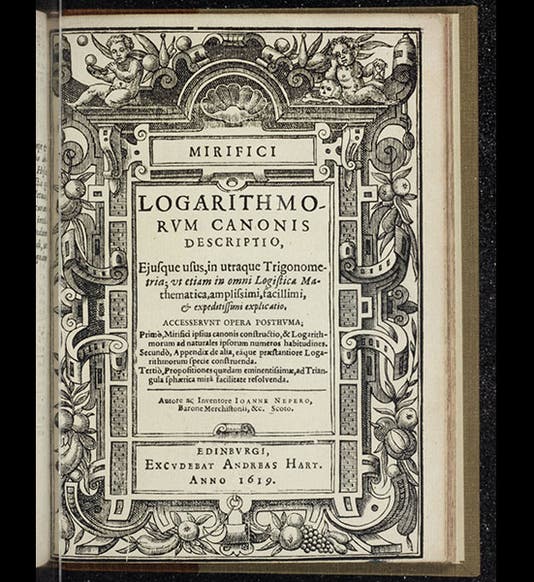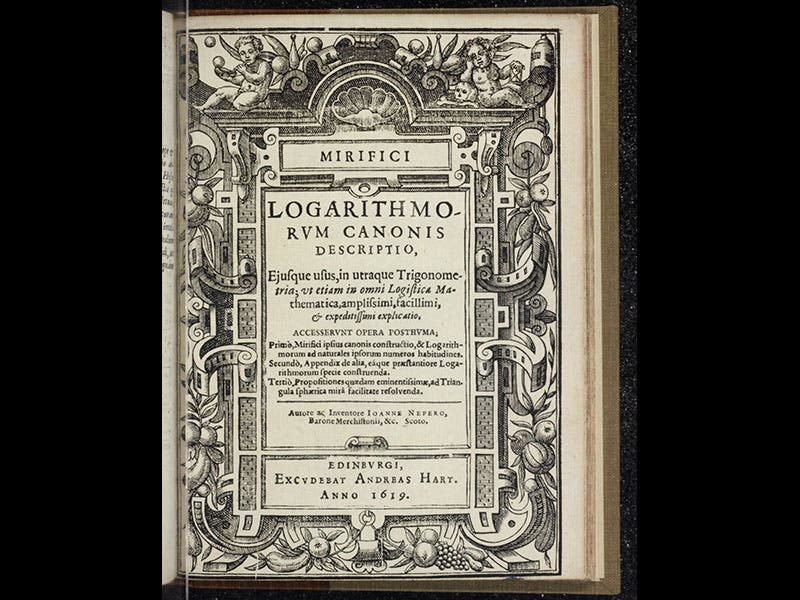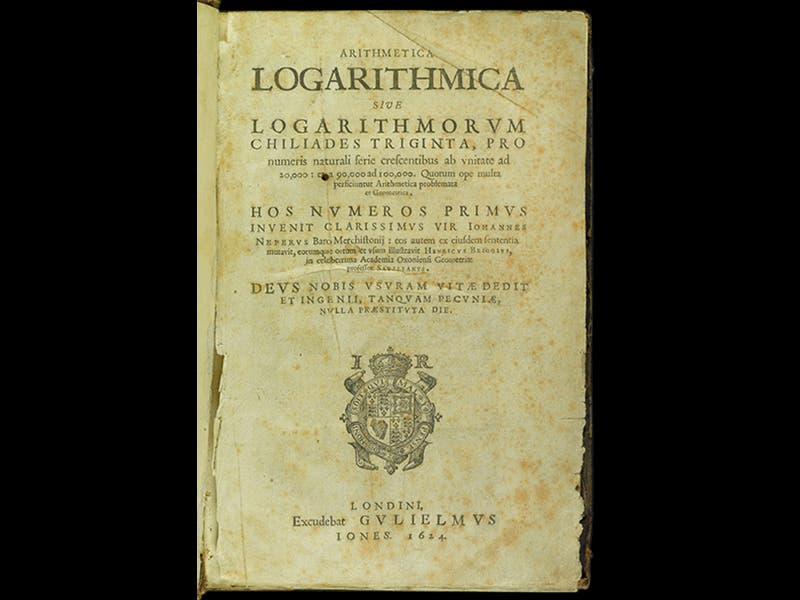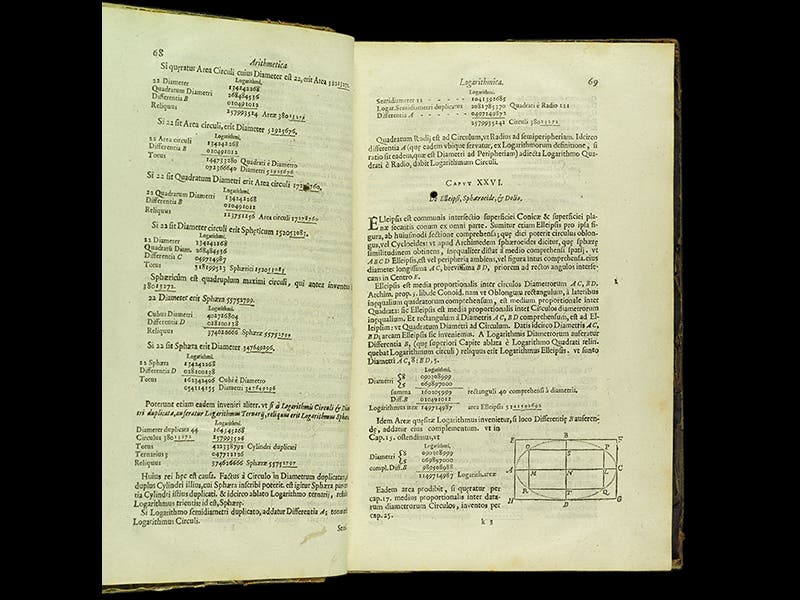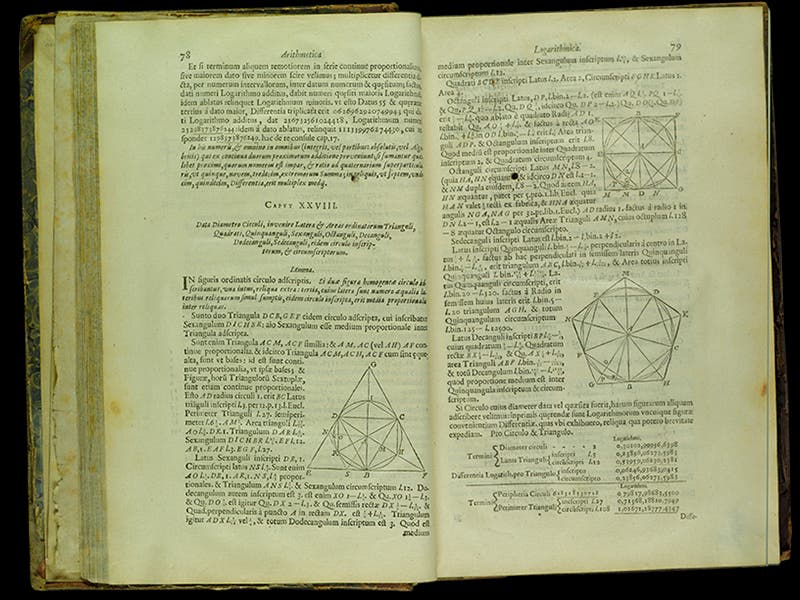Scientist of the Day - Henry Briggs
Henry Briggs, an English mathematician, died Jan. 26, 1630, at age 68. Briggs was chiefly responsible for disseminating the new wonder tool, logarithms, to the computational community of the 17th century. Logarithms were invented by the Scotsman John Napier and first announced in 1614. When Briggs first saw Napier's book, he was thoroughly smitten, and he immediately began teaching logarithms to his students at Gresham College. He went to see Napier up in Scotland, and seems to have received Napier's blessing as his successor, for when Napier died in 1617, Briggs saw his Mirifici logarithmorvm canonis constructio through the press in 1619 (first image).
Briggs made two principal contributions to further the use of logarithms. He proposed a system of base-10 logarithms, arguing that they would be easier to calculate than base-e, which Napier had used. And since one cannot use logarithms without a set of log tables, Briggs published Arithmetica logarithmica (1624), which contained the logarithms of all integers from 1 to 20,000 (second, third, and fourth images). In 1628, he published an expanded edition which went from 1 to 1 million. Each logarithm was given to ten decimal places, which means a prodigious amount of labor went into the two publications. We have both editions of the Arithmetica logarithmica in the History of Science Collection, as well as a 1631 translation into English. We also have first editions of Napier's Mirifici logarithmorvm canonis descriptio (1614) that so enthralled Briggs, and the Constructio (1619) that Briggs edited for publication.
Since we have not yet digitized our copy of Briggs’ Arithmetica logarithmica, the images above come from the copy at Lehigh University.
Dr. William B. Ashworth, Jr., Consultant for the History of Science, Linda Hall Library and Associate Professor, Department of History, University of Missouri-Kansas City. Comments or corrections are welcome; please direct to ashworthw@umkc.edu.

